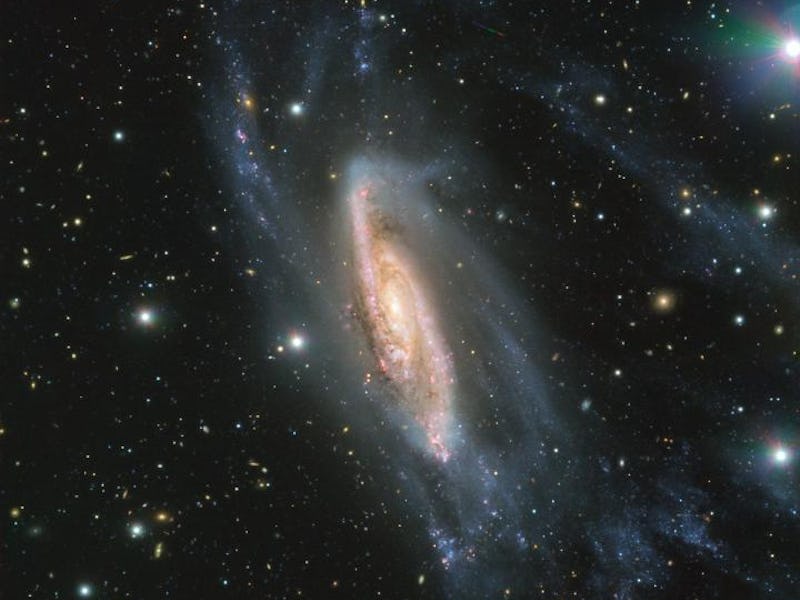Approximately 65 million light years from Earth, a galaxy resembling a pressed pink begonia rotates in the blackness of space. Scientists announced they captured an image of it on Wednesday, and the lustrous system of stars surrounded by whirls of stardust and a streaking rogue asteroid is a wonder.
NGC 3981 was initially imaged in May and was captured by instruments on Unit Telescope 1 at the Very Large Telescope, a telescope facility operated by the European Southern Observatory (ESO).
The VLT is located in Chile and is considered the world’s most advanced visible-light astronomical observatory. This image was taken as part of the ESO’s Cosmic Gems program, a public outreach and education scheme that makes use of the telescopes when they’re not being used for scientific observations.
Join our private Dope Space Pics group on Facebook for more strange wonder.
This galaxy lies within a constellation called the Crater, a small smattering of stars rooted in the Southern Celestial Hemisphere that’s also known as the Cup. In Greek mythology, Apollo angrily threw the Cup into the night sky after a crow failed to bring it to him in a timely matter.
NGC 3981 was caught by an instrument called FORS2.
The resplendent center of NGC 3981 is actually a disc of hot, young stars. This is typical of a spiral galaxy, which make up the majority of the bright galaxies we see in our own Milky Way. Further away from the bright-young star center lies older objects, gas, and dust — seen here as the baby blue wisps that surround the galaxy like taffeta. The stretched bits viewed here are likely due to do to the gravitational influence of a long-ago galactic encounter.
But don’t be fooled by the image’s loveliness: The center of this highly energetic galaxy also contains a supermassive black hole, the largest type of black hole.
These are found in the center of almost all known massive galaxies — our Milky Way has a supermassive black hole that lines up with the location of the star Sagittarius A.
Scientists aren’t positive why supermassive black holes are in galaxies, but one theory is that the black hole forms and then collects the galaxy around it — like NGC 3981.
